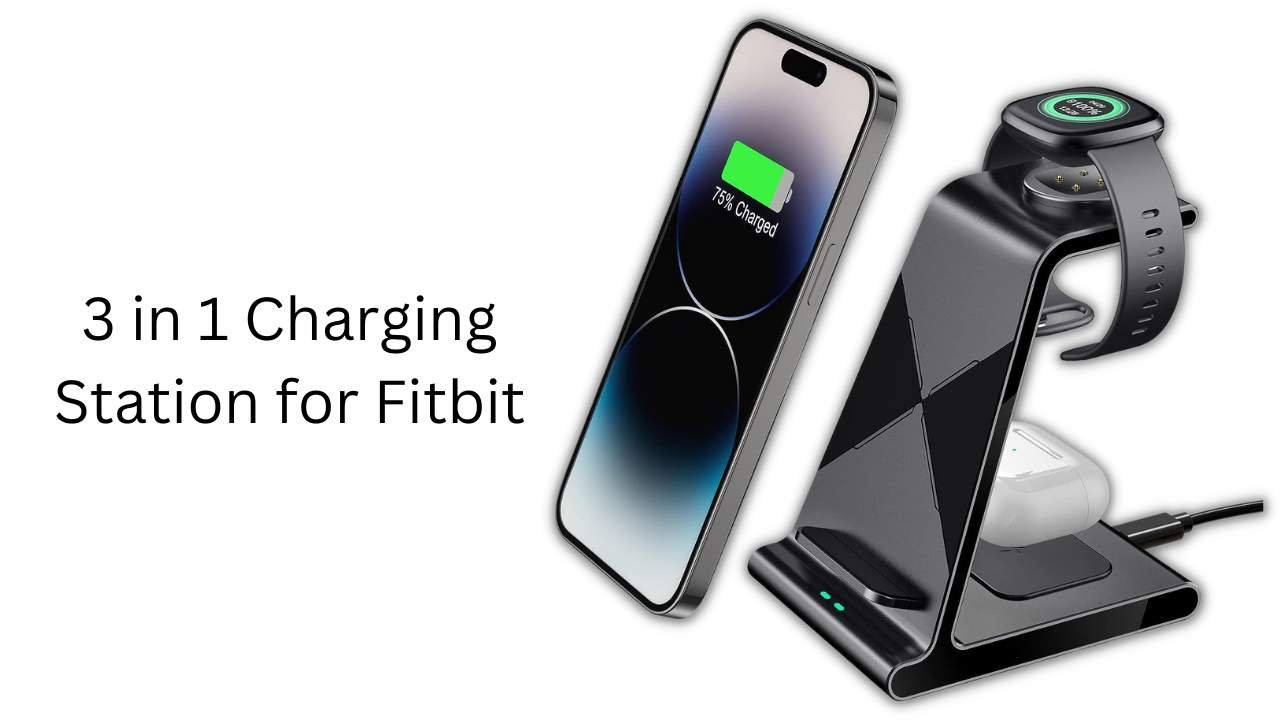Fitbits, the go-to fitness trackers for health enthusiasts, provide invaluable insights into our daily activities. However, what do you do when the inevitable happens – you lose your charger, or you find yourself in a situation where a traditional charger is not at your disposal? Fear not!
There are alternative methods to keep your Fitbit juiced up and ready to track your fitness journey.
In this guide, we’ll explore creative ways to charge your Fitbit without a conventional charger.
Why Charge a Fitbit?
Before diving into the solutions, let’s quickly address why charging a Fitbit is essential. Fitbits monitor various metrics such as steps taken, heart rate, and sleep patterns, providing users with valuable data to enhance their well-being.
To ensure uninterrupted access to these insights, keeping your Fitbit charged is paramount.
How to Charge a Fitbit Without a Charger
Tips for Keeping Your Fitbit Charged
To maintain optimal battery life for your Fitbit, consider these tips:
- Charge your Fitbit regularly to prevent the battery from fully depleting.
- Avoid exposing your Fitbit to extreme temperatures, as this can impact battery performance.
- Keep your Fitbit firmware up to date by installing the latest software updates.
Use a USB Cable
If you have a USB cable compatible with your Fitbit, you’re in luck.
Follow these steps:
- Plug the USB cable into a USB port on your computer or another device.
- Connect the other end of the cable to your Fitbit.
Check out the recommended cables for your Fitbit from below.
This simple workaround allows you to harness the power of common USB cables to charge your Fitbit.
Do you want to know how you can make a Fitbit Charging cable by yourself, then do watch the video given below –
Use a Wireless Charging
Some Fitbit models, such as the Fitbit Sense 2, Fitbit Versa 4, Fitbit Charge 5 & Fitbit Luxe do have wireless charging options. So if you have any of those models, you are lucky.

Check out the below recommendation for wireless chargers for your Fitbit.
For those with a wireless charger, the process is seamless:
- Place your Fitbit on the wireless charger.
- Witness the magic as your Fitbit begins charging without the need for a traditional cable.
Use a Car Charger
When time is of the essence, a car charger comes to the rescue:
- Plug the car charger into your car’s cigarette lighter.
- Connect the other end of the cable to your Fitbit.
Ideal for on-the-go charging, this method ensures your Fitbit gets the power it needs, even during a quick drive.
Laptop USB Port
Use a Solar Charger
Embrace the sun’s energy with a solar charger:
- Place your Fitbit on the solar charger.
- Let it soak up the sun’s rays and charge your device.
Perfect for outdoor enthusiasts, this method ensures your Fitbit stays powered during extended adventures.
Use a Battery Pack
When a power outlet is out of reach, a battery pack becomes your ally:
- Plug the battery pack into your Fitbit.
- Watch as your Fitbit gets the energy boost it requires.
This portable solution ensures you can charge your Fitbit anywhere, anytime.
Fitbit Charging Issues and Solutions
Problem: Using a charging cable from a duplicate or another company.
Solution: Always use the original Fitbit charging cable from the same company.
Problem: The device port not working properly.
Solution: Keep your device always clean and fresh, ensuring proper maintenance.
Problem: Drop out of charging pins.
Solution: Ensure a secure connection and avoid leaving your watch to charge for extended hours.
Problem: Dirty charging pins and contacts.
Solution: Maintain the device’s dryness and cleanliness for optimal charging.
Problem: The Tracker is wet.
Solution: Keep the device dry and clean to prevent water-related charging issues.
Problem: Using a faulty USB may affect the quality of the tracker.
Solution: Opt for a USB wall charger instead of a desktop charger for better results.
Problem: Haven’t used charging cables for a long time.
Solution: Always connect your device securely before switching the power source, and avoid prolonged periods without charging.
Conclusion
In conclusion, the quest to charge your Fitbit without a traditional charger unveils a world of possibilities. Whether utilizing USB cables, wireless chargers, car chargers, solar chargers, or battery packs, you have options to keep your Fitbit alive and kicking.
As a bonus tip, in dire situations, a smartphone charger can also come to the rescue – just plug it into a power outlet and connect it to your Fitbit.
FAQs About Charging a Fitbit Without a Charger
- Are all Fitbit models compatible with these charging methods?
- Not all Fitbit models support every charging method mentioned. Refer to your Fitbit’s user manual for specific instructions.
- Can I use a smartphone charger in a pinch?
- Yes, a smartphone charger can be used as a temporary solution. Plug it into a power outlet and connect it to your Fitbit.
By exploring these alternative charging methods and adopting best practices, you can ensure your Fitbit stays charged, providing you with continuous insights into your fitness endeavors.
Stay Charged, Stay Active
Unleash the potential of alternative charging methods to keep your Fitbit ready for every step of your fitness journey!



![Charging Hacks: How to Charge a Fitbit Without a Charger 3 Kissmart Charger for Fitbit Charge 5 / Fitbit Charge 6 / Fitbit Luxe, Replacement Charging Cable Cord Accessories for Fitbit Luxe/Charge 5/Charge 6 [2-Pack, 3.3ft/1m]](https://m.media-amazon.com/images/I/316+IBM+smL._SL500_.jpg)
















